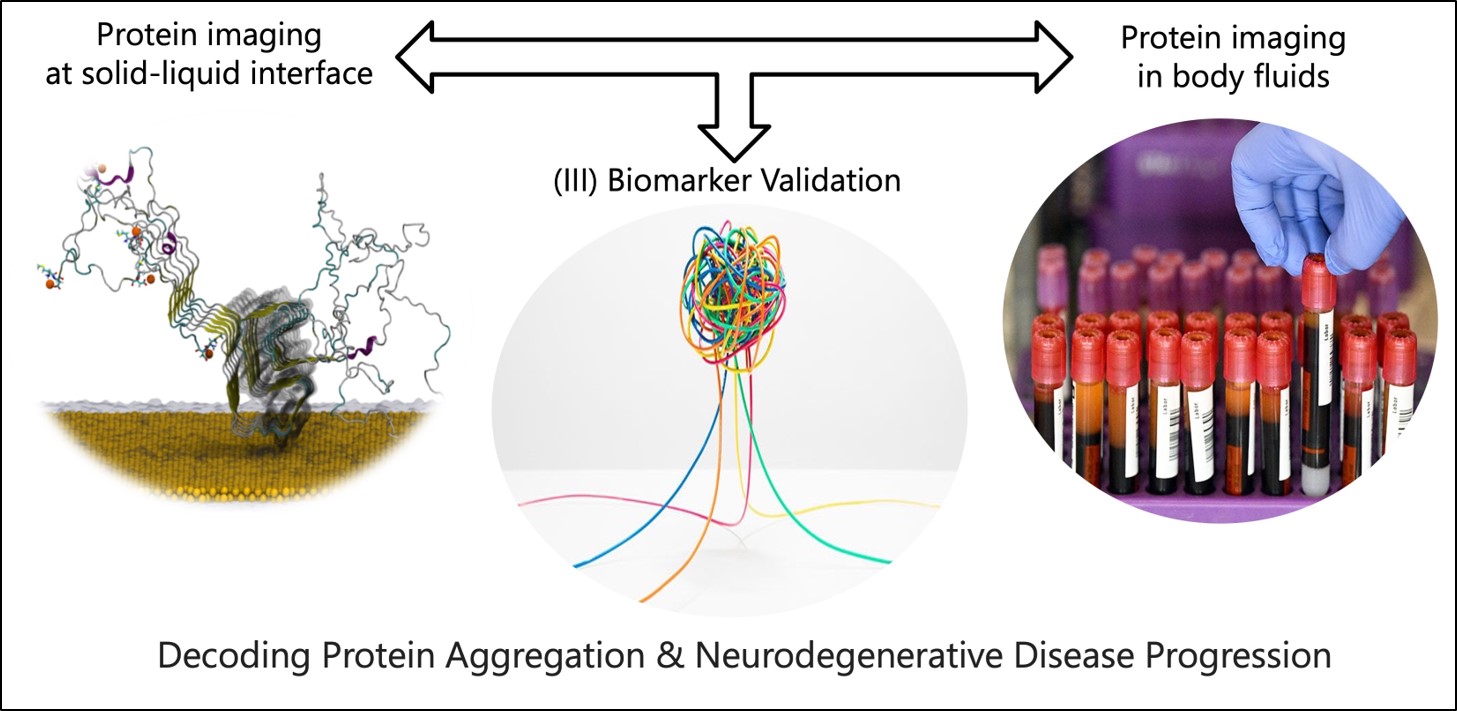Chemical Profiling of Alzheimer's Proteins
Presymptomatic diagnosis is critical for slowing Alzheimer’s disease (AD). Aggregated forms of amyloid beta (Aβ) and tau proteins are well known biomarkers in AD diagnosis. Recently, we discovered that the size, shape, morphology and prevalence of these proteins on red blood cells (RBCs) correlate with neurocognitive disorder levels in patients. Our goal through this project funded by the Synapsis Foundation- Dementia Research Switzerland is to validate the physical biomarker data on larger study population and chemically identify the proteins on the surface of RBCs using nanoimaging and chemical spectroscopy. The classified proteins will be correlated in a patient-specific manner with clinical results to build a predictive model for identifying people at risk of developing AD and evaluating treatment efficiency. Monitoring protein aggregation in blood will lead to a deeper understanding of the molecular pathogenesis of AD, identify therapeutic targets and deliver an approach for blood-based screening of patients at various stages of decline in memory and cognition.



